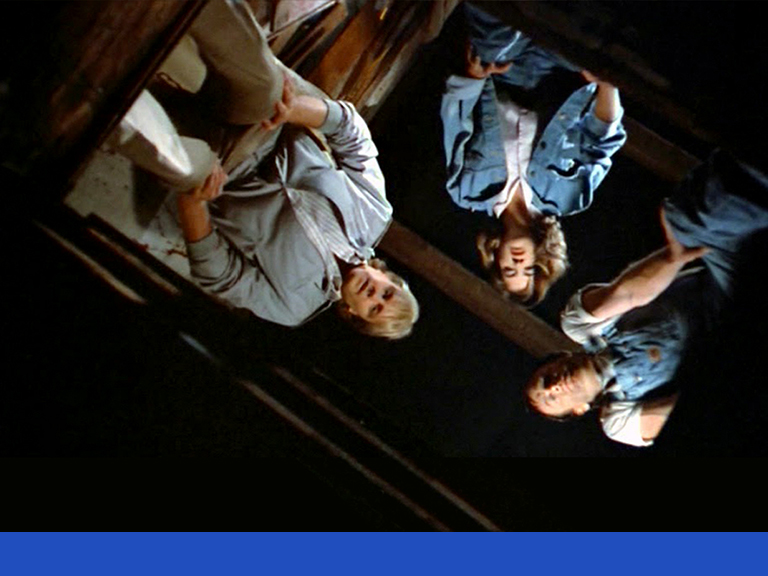This is the editorial note to TNI Vol. 46: Dig. View the full table of contents here.
Subscribe to TNI for $3 and get Dig (and free access to our archive of back issues) today.
• • •
Let this sink in: The stability of the earth is a physical fiction that we only experience thanks to its unceasing speed. Trippy, huh? There’s more. After the young molten planet began to cool and the first solid land formed, there was no atmosphere to speak of. That took millions of years of volcanic activity spewing the ionized innards of the earth outward before liquid water could pool and oxygenating algae could bloom. In a poetic reading of that chronology, the air we breathe is the breath of the rock we stand on. Perhaps that’s why, when we expire, we reach back for the ground.
Living well is generally figured as sprouting from the earth, the result of a fertile interplay between a root system and strong soil. Fortifications, public works projects, and toddlers at the beach all enjoy an aura of accomplishment at having burrowed well. Despite a species-wide tendency to reside in the fresh air, tunneling underground still taps a wellspring of approval, as if roaming far and wide laterally is just a substitute for where we really would like to be going: down.
Of course, the subterranean has its bad associations too — hellish mines, eerie crypts, pits and trap doors and trenches. But the recurring obsession with journeys to the underworld across cultures suggests an underlying desire for deeper intimacy with the deep. In climatically and geopolitically seismic times like these, somewhere solid to stand is more than reassurance: If the ground is shaking around us, it’s no surprise that we might want to find its ultimate stable base below. And so, for our 46th issue, we direct our eyes downward and consider the ground beneath the ground beneath our feet. From Palestine to North Dakota, this issue is an open dig site.
Karen Gregory and Miranda Trimmier review two new books that delve beneath the surface of the present moment for their analysis. In Jussi Parikka’s A Geology of Media, Gregory finds a materialist account of the media devices so fundamental to the contemporary on-demand economy, tracing the rare earths and underwater cables and disputed environmental resources that make “immaterial labor” possible. And Trimmier tackles Andreas Malm’s new Fossil Capital, which explores Britain’s adoption of coal during its reconfiguration of the global economy in the 19th century. Instead of a natural, inevitable fit with expanding industrialization, fossil fuels’ centrality, the book shows, records workers’ struggles and explosive strikes. This perspective points toward a way out of the haze of fossil-fuel-based surplus value extraction.
Maaza Mengiste writes of Hamid Ismailov’s new novel, The Underground, reading it against the letters she exchanged with her cousin, who left Ethiopia in the 1980s to study in Moscow. Ismailov’s protagonist too is a young black man lost in the labyrinthine metro system under the capital city, but unlike Mengiste’s cousin, he has no “home where everybody is like us.” The elegiac novel is a haunted map of Russian identity and belonging, though it gives readers “bursts of light to guide us forward.”
Elizabeth Newton writes about the gendered practice of crate-digging and sifts through her own history of exclusion at the hands of male musicians and collectors. And Mairead Case explains why she cherishes the children’s classic Mike Mulligan and His Steam Shovel, that rare fable that privileges staying settled and digging your heels in over world-conquering exploration.
Other political sentiments bubble up from the ground. Morgan Adamson reads the promotional material developed by Williston, North Dakota, the epicenter of the Bakken shale fields, and coins the term ”anthropocene realism” to describe such material’s aim of suspending the contradictions of fracking and “energy independence.” Ideological justifications for fracking, Adamson shows, are bound up with the fantasy of reproducing white suburbia, despite everybody knowing well that “the American Dream” is a relic of an exhausted way of life, running on fumes. And in Maryam Monalisa Gharavi’s series of photographs, “Performative Ground,” political insecurity and administrative violence appear as denatured, unsettled ground around her home in Ramallah.
Palestinian artists Basel Abbas and Ruanne Abou-Rahme take the “nomad bandit” nature of what might otherwise be their national archive and run with it. Their exhibition, “The Incidental Insurgents,” demonstrates the political efficacy of newness in opposing a visual system that depicts them as overwhelmed by their landscape, under rubble. Their “freshly printed archive is as much an act of creation in the face of a legacy of destruction as it is a reminder of that history,” writes Heather Holmes in “Print on Demand.” From the other side, Molly Oringer takes stock of Israeli settlements’ use of recent history rather than ancient archaeology — bunkers, short films, “immersive” experiences — to build a “museum without images” that justifies their upside-down sense of being under siege.
In an interview with filmmaker Anna Zett, she discusses This Unwieldy Object, her filmic essay that traces the relation between early American animated dinosaur films, the colonial frontier they virtualized, and the “end of history,” among other things, fashioning a surprising guide to the American West’s monuments and monsters.
Unearthing the past always reveals the shakey ground official narratives stand on. The soil is in fact continually renewed, the product of decomposition, seep, and drift. To have any hold on this earth, to stake any sort of claim, it’s necessary to get your hands dirty. We had better dig, before we end up buried.
